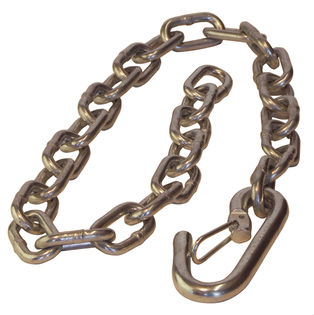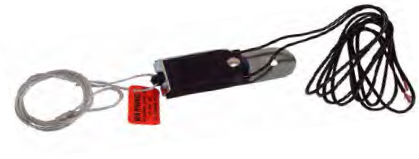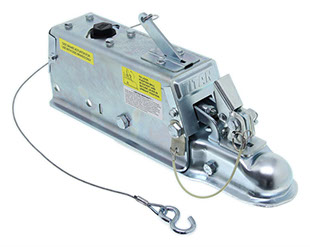Safety Connectors
Chains & Cables
Chains and cables (Safety Connectors) are important components in the safety of your trailer and should not be overlooked or given the attitude that any chain/cable and hook or shackle will do.
There are so many trailers in this country running with an old bit of chain left over from some long forgotten job and an even smaller S hook that someone bent up from an old nail.

If in the unfortunate circumstances that your trailer decides to leave the comfort of your vehicles tow hitch at 70 mph, you have a trailer barrelling full blast down the road unguided and unhindered into any poor soul that may be on the road at the same time.
Poorly chained and cabled trailers do come loose and do kill and maim people.
All safety connectors need to be rated for at least twice the gross towed weight (GTW) you are towing and the safety connectors should be indelibly marked by the component manufacturer with their rating.
Safety connectors should be mechanically fitted as close as is practicable to the longitudinal center line of the tongue. They need to be crossed under the coupler and of such a length that in the event of coupler failure, it will prevent the tongue hitting the ground as well as help control the direction of the trailer to follow the towing vehicle.
Attach the chain/cable as close as practical to the coupler and keep them as short as practical without interfering with full lock steering
Welding or bending of chain links should never be done under any circumstances.
Use a high tensile bolt and safety chain mounting washer to attach your safety connectors to the tongue – also keep any holes drilled in the tongue at least ½ to ¾ the length of a chain link from the outside edge)
Always use hooks or S hooks with spring loaded safety catches to prevent them coming loose. Replace any frayed or kinked cables as these could be inherent weak points,
Breakaway Brakes
Breakaway brake units are designed to immediately apply full braking power to the trailer brakes should the trailer separate from the tow vehicle.
Electric Braked Trailers

On electric braked trailers, the breakaway unit is basically a on/off switch box fitted with a removable pin which is attached to a tether cable.
The box is mounted on the trailer tongue and the tether fitted to the tow vehicle with a shackle or hook.
A small rechargeable battery on board the trailer supplies power to the breakaway box and when the pin is pulled from the box (when the trailer comes away from the tow vehicle) full power is instantly applied to the brakes.
Power is supplied to the brakes until the on board battery runs out of juice or the pin is re-fitted to the breakaway box.
It does pay to regularly check the battery charge especially when the trailer is infrequently used. If this is the case, remove the battery and charge it on a mains charger before any trips. Also check that the tow vehicle is charging the battery when plugged into the trailer.
To check if the breakaway unit and battery are working correctly, immobilize the trailer and jack the wheels up. Pull the breakaway pin while a buddy spins the wheels. They should lock up immediately.
The breakaway tether needs to be attached to the tow vehicle and not to the chains, the chains will not pull the breakaway pin out if the trailer decides to part company. Likewise the tether needs to be in good condition and needs to be replaced if kinked, frayed or damaged. If the damaged section fails before the breakaway pin can be pulled, the brakes will not come on.
Breakaway brakes should not be used as a park brake as the battery will quickly lose its charge and the brakes will release.
Hydraulic Braked Trailers

Modern hydraulic surge couplers come complete with an in built breakaway lever which again is activated by a tether cable attached to the tow vehicle.
When the trailer comes adrift from the tow vehicle, the tether cable will manually actuate the master cylinder and apply hydraulic pressure to the brakes. In most cases the cable will lock in its pulled/activated position retaining pressure on the brakes. Simple and effective if maintained correctly.
Check your coupler manufacturer maintenance booklet to see what is required for testing the breakaway unit and most importantly any maintenance and lubrication requirements.